Utah is home to hundreds of spider species. The majority of these spiders are beneficial predators and harmless to humans.
We have compiled a list of the most common spiders you can encounter in Utah, from the most common to the least common. Continue reading below to find out more about the spiders in Utah.
Table of Contents
Are There Venomous Spiders in Utah
The black widow spider is the only venomous spider you may encounter in Utah. They are the most dangerous spider to humans. Bites can be fatal to older adults and children. Luckily this is a sedentary species and spends most of its time on its web.
Bites from the black widow include a neurotoxic venom that produces latrodectism, common symptoms include pain, sweating, vomiting, and muscle cramps.
Spiders in Utah
Take a look below at the most common spiders in Utah.
1. Bold Jumping Spider
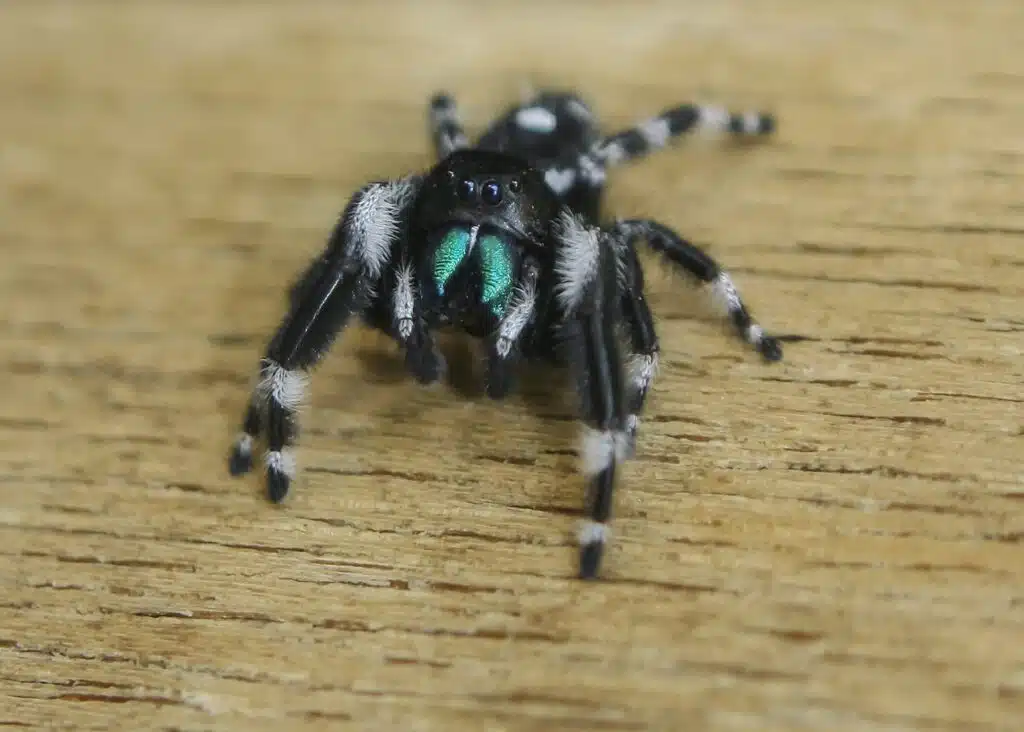
The Bold Jumping Spider (Phidippus audax) is very common in Utah, belonging to the Phidippus genus. This spider is large with excellent vision, which enables them to stalk prey.
The male can grow to 15mm in body length, while females can grow to 18mm. This is a black spider with spots and stripes on the legs and abdomen. The spots are orange in juveniles and turn white with age.
The four eyes enable the bold jumping spider to see three hundred and sixty degrees around them. They prefer open areas, where they can actively hunt. They do not use webbing to capture prey. You will encounter them in fields and grasslands, on fences, on exterior walls, and in gardens.
2. Western Black Widow
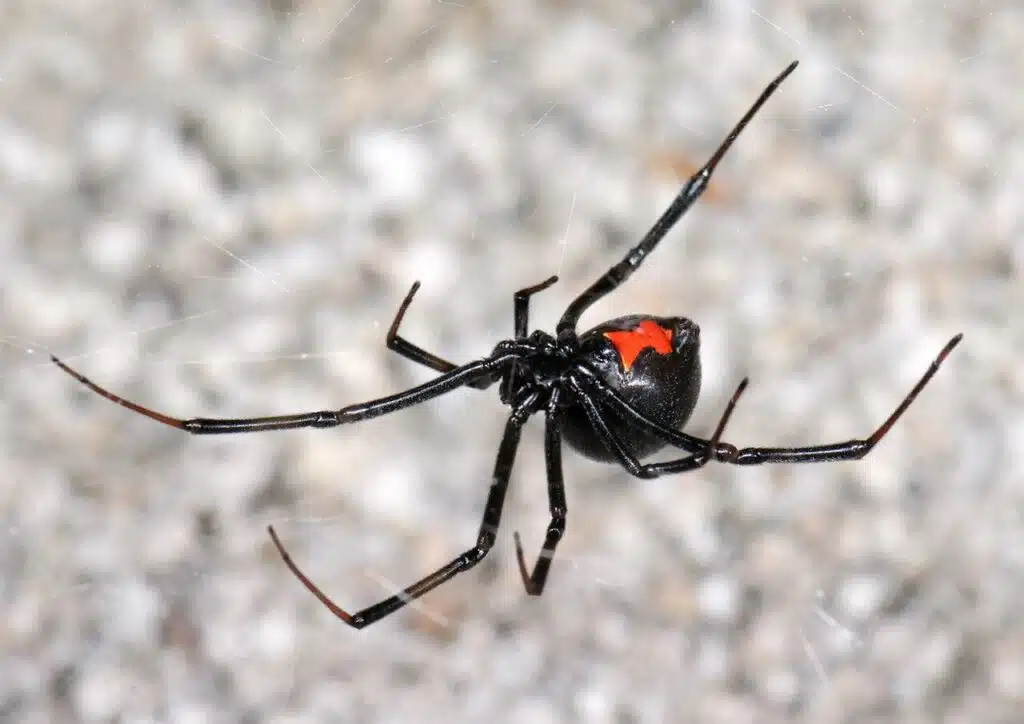
The Western Black Widow (Latrodectus hesperus) is the only venomous spider you will encounter in Utah. Only the female is venomous. The female can grow to 16mm in length and is black with a red hourglass mark on the lower abdomen. The hourglass can also be yellow and sometimes white.
The male is half the size of the female and tan in color with light stripes on the abdomen. The female has a neurotoxic venom. Fatalities from a female black widow bite are reported between 0.5% and 12%. There have been no fatalities recorded in Utah from 2000 to 2008.
The venom is usually reserved for prey that gets entangled in their web. They paralyze prey with venom. This is not an aggressive spider and will only bite to protect her eggs or if they are harassed or threatened.
3. Western Spotted Orbweaver
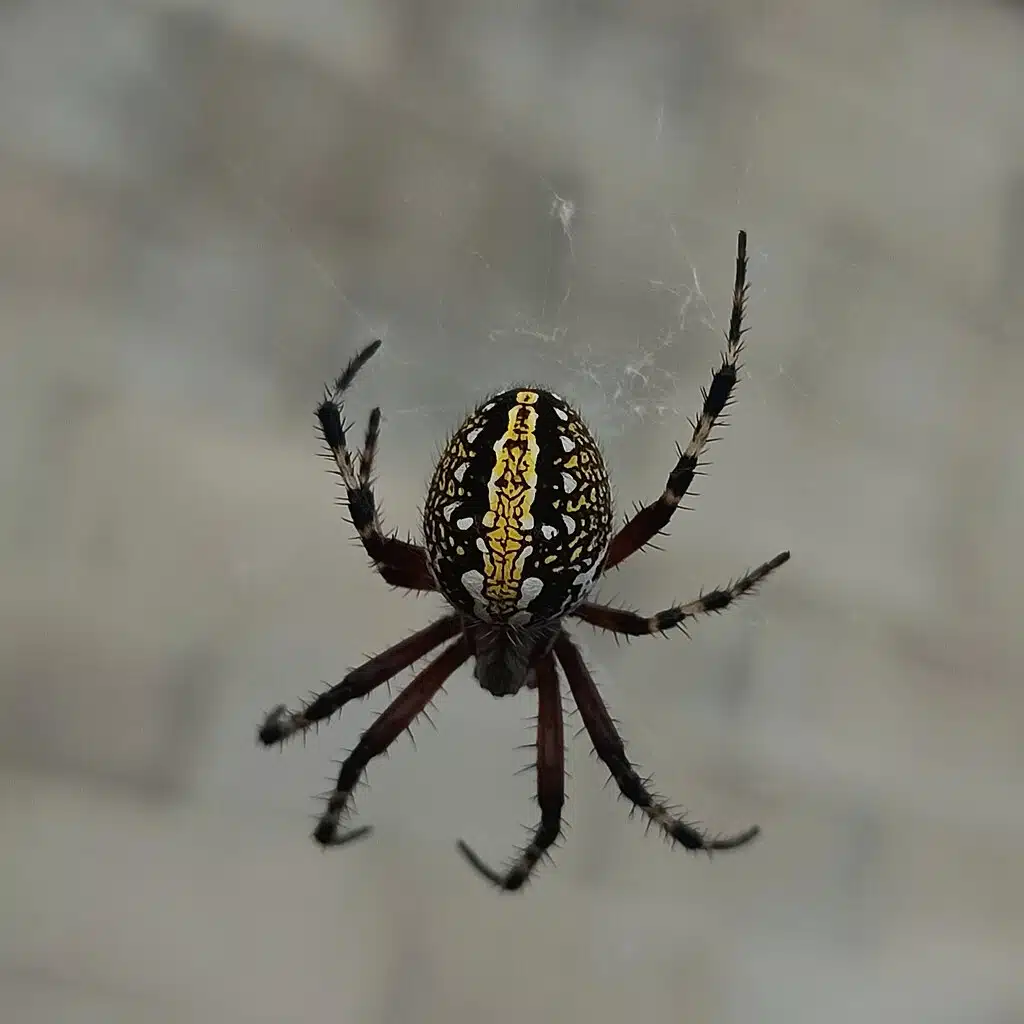
The Western Spotted Orbweaver (Neoscona oaxacensis) is also known as the zig-zag spider and belongs to the Araneidae family. This large spider can grow to 18mm in length in females and 13mm in males. They have a distinct black-and-white pattern on the abdomen.
The female is 2.5 times wider than the male, while the male has palpi with an S-shape conductor.
4. Desert Tarantula
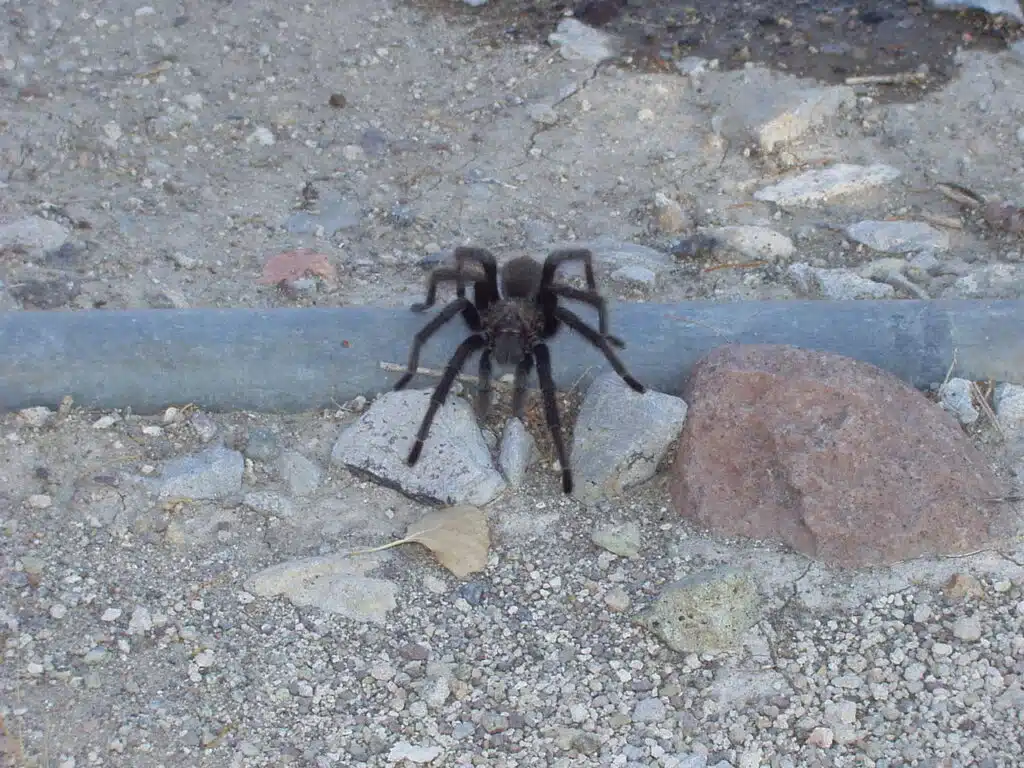
The Desert Tarantula (Aphonopelma iodius) belongs to the Theraphosidae family. They live in webbed burrows under the surface in desert areas of Utah. The burrow entrance is obstructed with webbing, which protects them against predators and the desert heat.
This spider is a very popular pet, also referred to as the northern blond and Great Basin blond. They are not easy to find in the pet trade than the more colorful species. They are docile and will run and hide rather than bite.
5. Zebra Jumping Spider
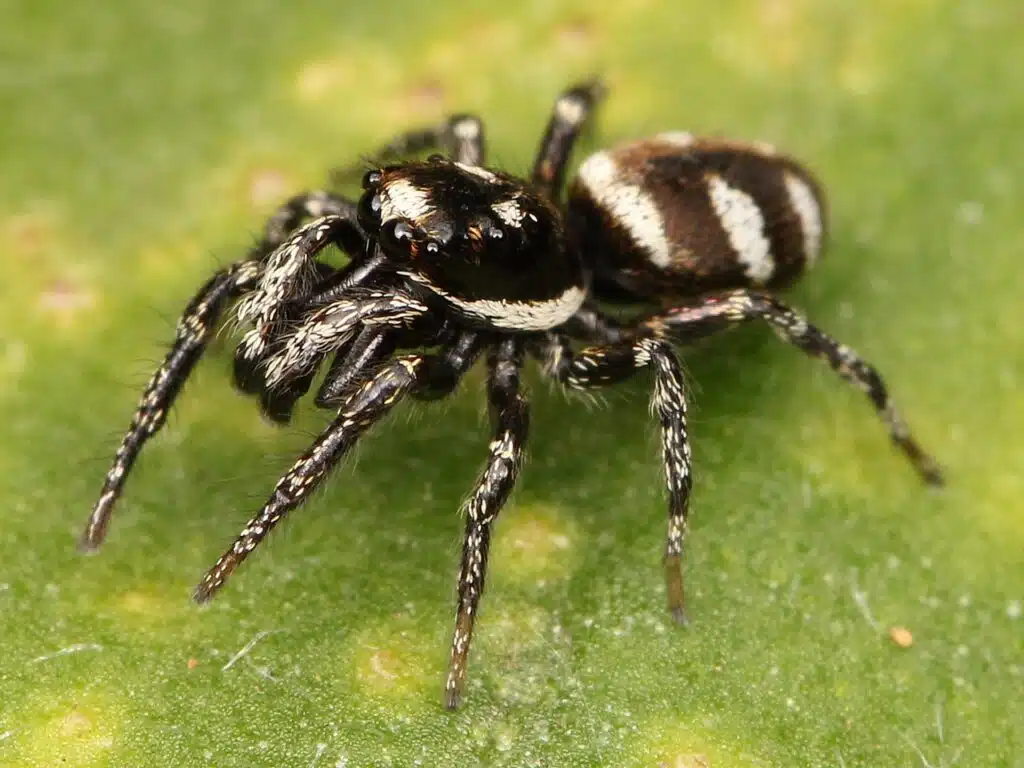
The Zebra Jumping Spider (Salticus scenicus) is common in Utah and easily recognized by its black and white coloration. The female can grow to 9mm in body length, while the males grow to 6mm. The male also has larger chelicerae than the female.
This spider has large anterior median eyes. They have eight eyes with excellent vision. They are common in open habitats, including beaches, trunks of trees, rock faces, and shingles. They are often found close to urban habitats, as they prefer open and vertical surfaces to hunt.
They are known to enter homes on occasion, but are harmless and are more likely to jump away than to bite. If they do bite, they can inflict a painful bite, which is not medically significant.
6. Woodlouse Spider
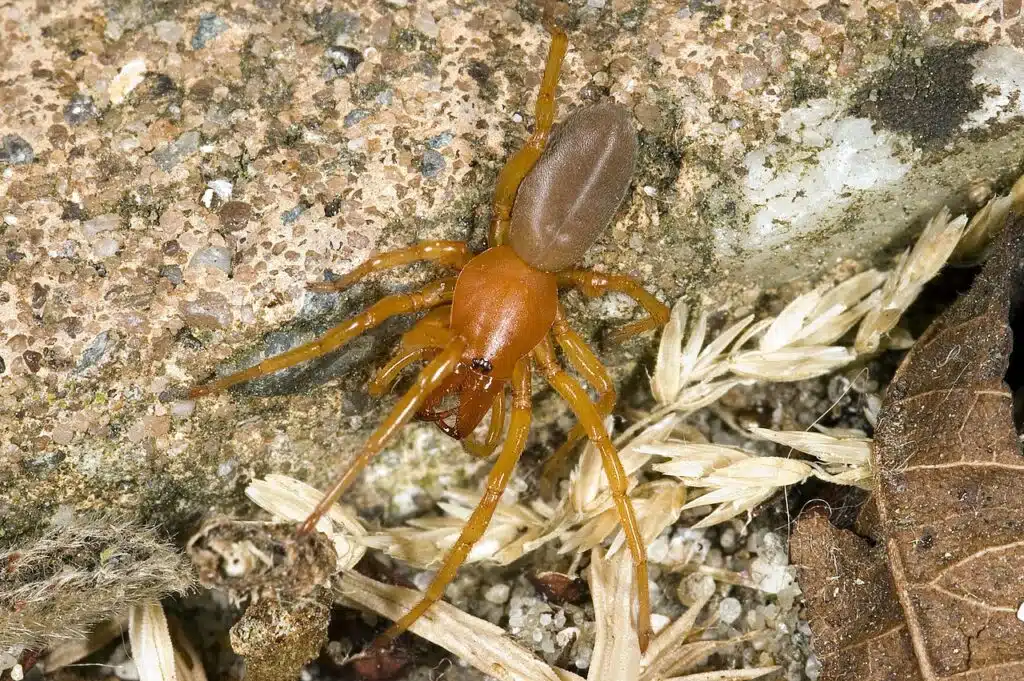
The Woodlouse Spider (Dysdera crocata) preys mainly on woodlice. They go by different names, including pill bug hunter, slater spider, and sow bug hunter. As with most spiders, the female is larger than the male and can grow to 15mm n length, while males grow to 10mm.
They have six eyes, a shiny beige to yellow-brown abdomen, and a tawny orange to red cephalothorax and legs. They are sometimes dark gray. They have very large mouthparts for their size.
You are likely to encounter this spider under rocks, logs, plant pots, leaf litter, and bricks. They are never too far from woodlice. They are known to wander into homes. The spider spends its day in a web, which is made inside partially decayed wood and in the indents of rocks.
Their large mouthparts make it easy to feed on woodlice, biting through the tough exoskeleton. As a result, they can give humans a painful bite, which is not considered medically significant.
When they cannot find woodlice, they will feed on millipedes, beetles, crickets, silverfish, and earwigs. It is also known to dominate and kill other spiders.
7. California Flattened Jumping Spider
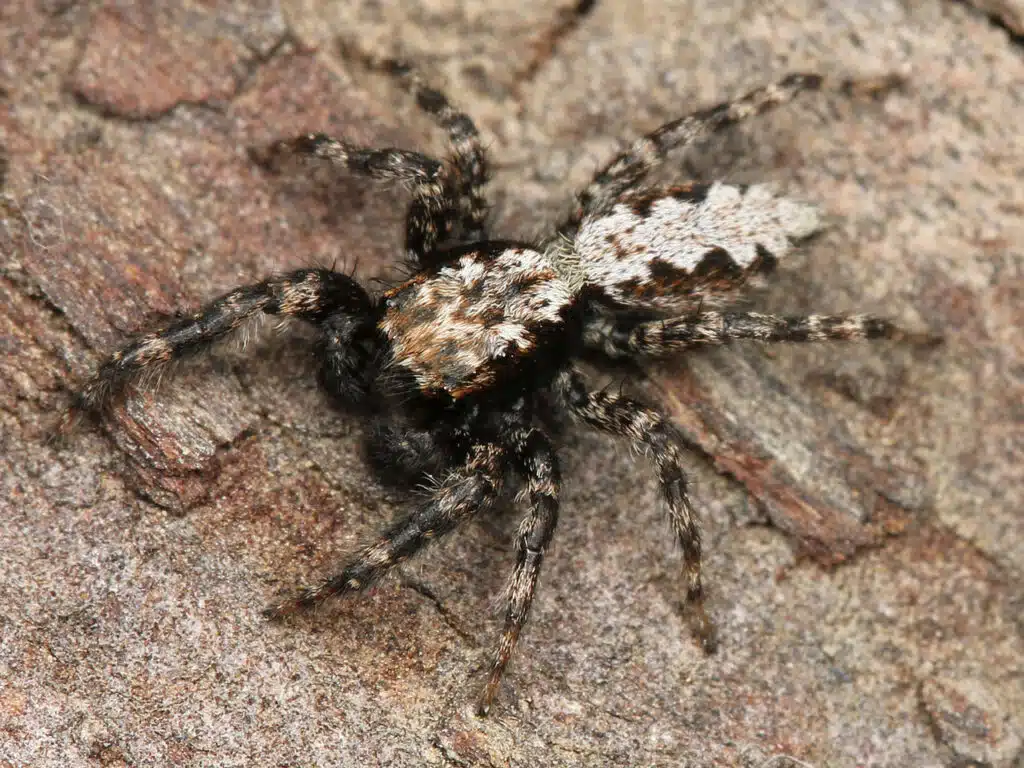
This jumping spider (Platycryptus californicus) is another of the common jumping spiders you can encounter in Utah. They can jump four times their body length when hunting or escaping prey. They belong to the Salticidae family and are often encountered inside homes.
This spider uses its jumping ability to ambush prey. They shoot out a single thread of silk to entrap the prey, which they then drag back to their retreat to feed on when they are ready. They can and will bite humans if handled roughly, though their bites are not medically significant. Still, they can be painful at the time.
8. Hobo Spider
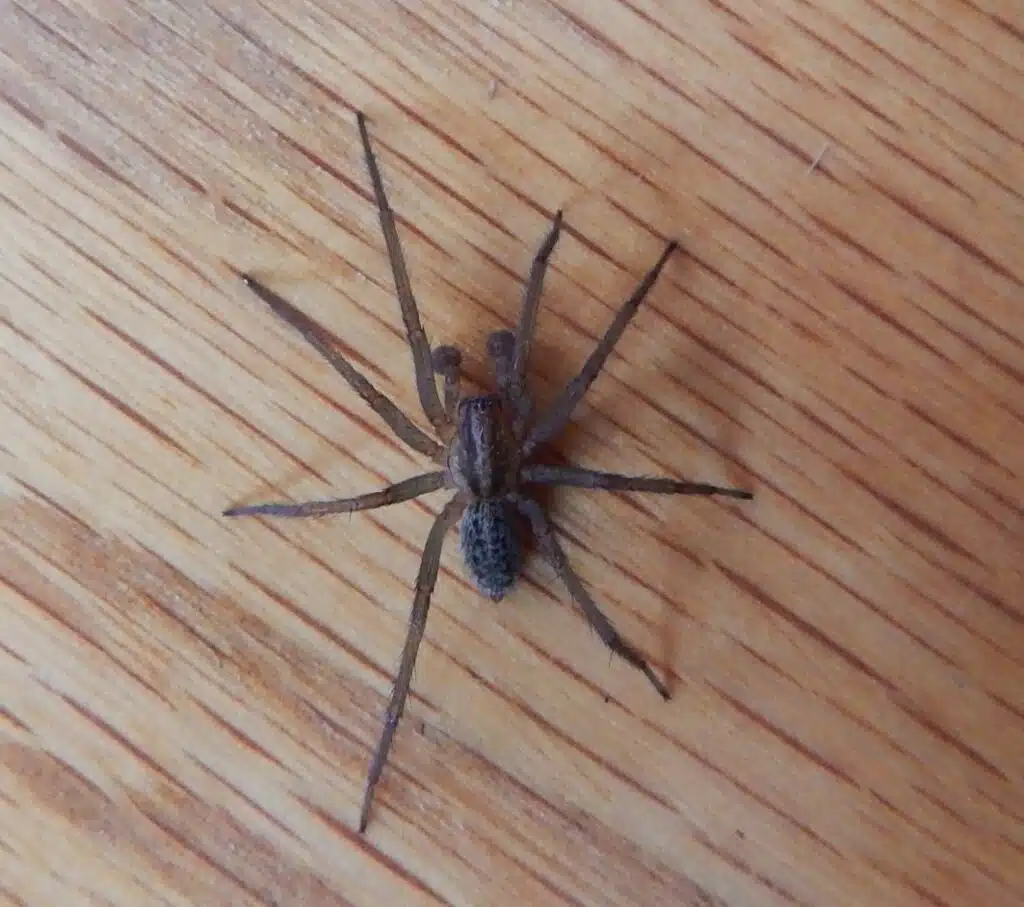
The Hobo Spider (Eratigena agrestis) is a funnel web spider and is known to construct a funnel-shaped web. They lie in wait for insects to accidentally get tangled in their webs. It’s not uncommon to find these spider webs in or around homes.
This spider can vary in appearance, making it hard to identify. They are brown and can grow to 14mm in body length. There is no colored banding on the legs. Some do have a chevron-shaped pattern down the middle of the abdomen.
Some have a light stripe that runs down the center of the sternum, others have light spots. They are common in fields and tend to avoid human habitats. It is uncommon that you will have an encounter with this spider.
They build horizontal webs near wood piles, where the spider waits for prey. The toxicity of this spider has been debated for many years, but it is not considered a venomous species by the CDC.
9. Cat-faced Orbweaver
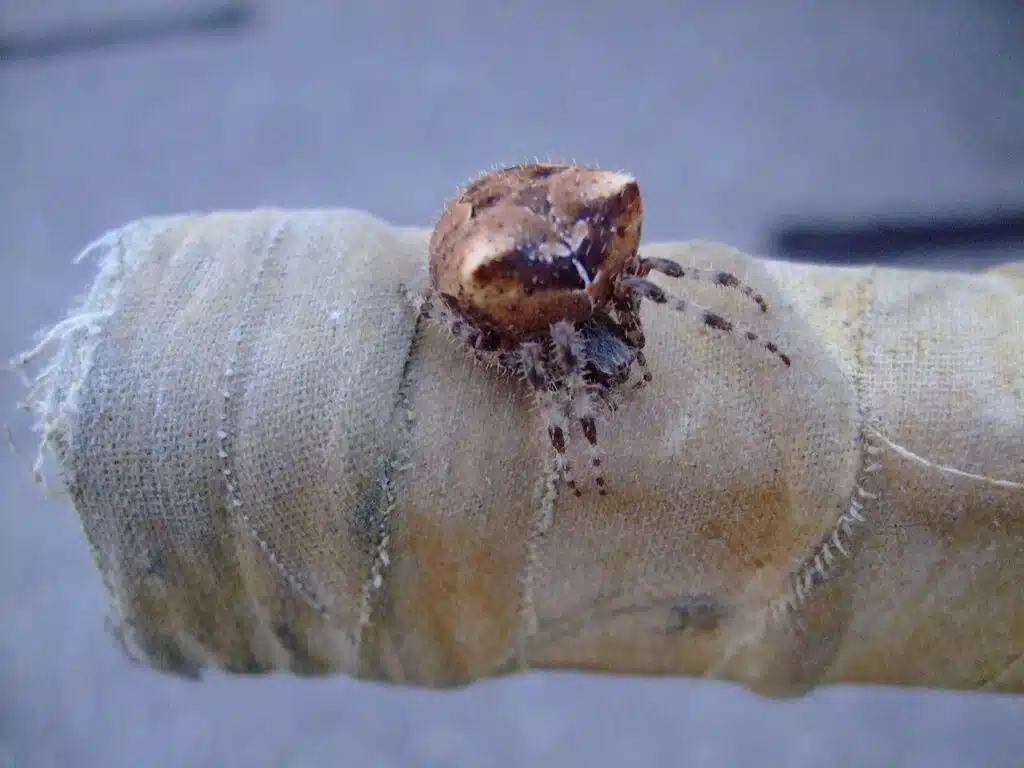
The Cat-faced Orbweaver (Araneus gemmoides) is a common orb weaver found in Utah and is completely harmless to humans. It is a natural predator of insects. They make their webs near lights and in closed spaces. It’s not uncommon to find them under wood, in animal burrows, and under overhangs.
They do vary in color but can be identified by the two horn-shaped growths on the abdomen. The color changes from winter to summer.
The female has a large abdomen, larger than her head. Males have smaller abdomens with longer bodies. They eat a variety of insects from house flies and fish flies, to mosquitoes and smaller spiders.
10. Triangulate Combfoot
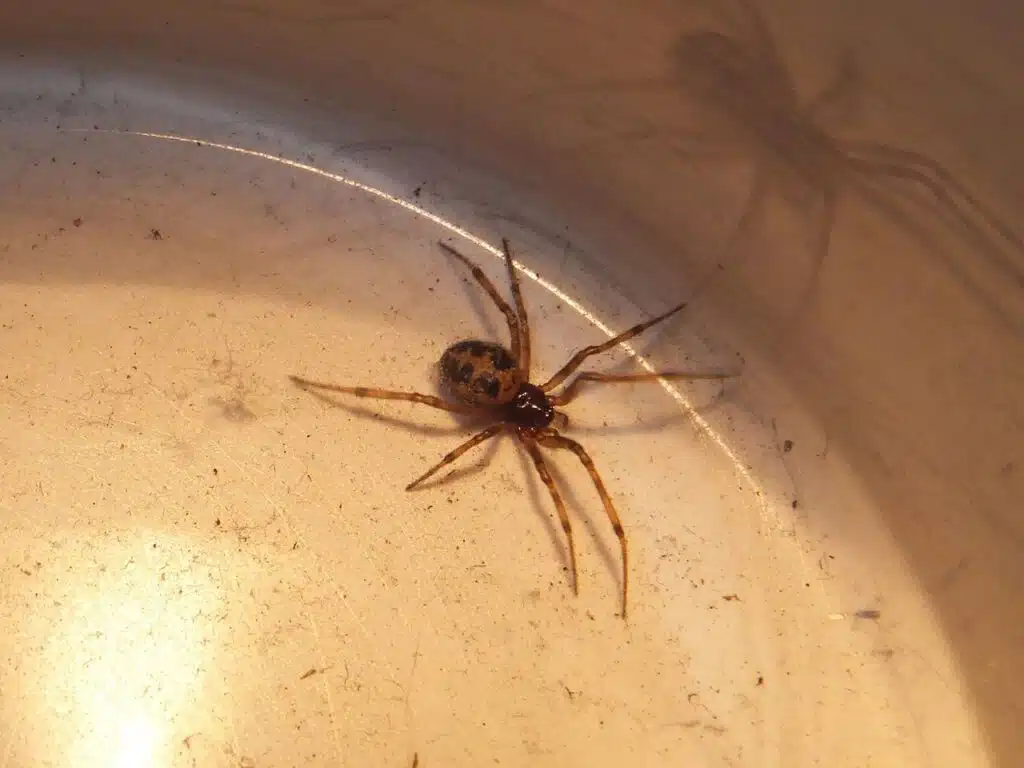
This (Steatoda triangulosa) is a cobweb spider, belonging to the Steatoda genus. It can be identified by the triangular-shaped pattern on the abdomen.
The female can grow to 6mm in body length and has a brown-orange cephalothorax, and yellow legs with small hairs. The bulb-shaped abdomen is creamy with a purple-brown zig-zag line. This spider preys on arthropods, ants, and other spiders. It preys on spiders that are believed to be harmful to humans.
This spider can be found in dark areas. They spend their day developing their web. The web is usually filled with dead insects. It is a house spider that will build a web in the dark corners of man-made structures.
11. Western Lynx Spider
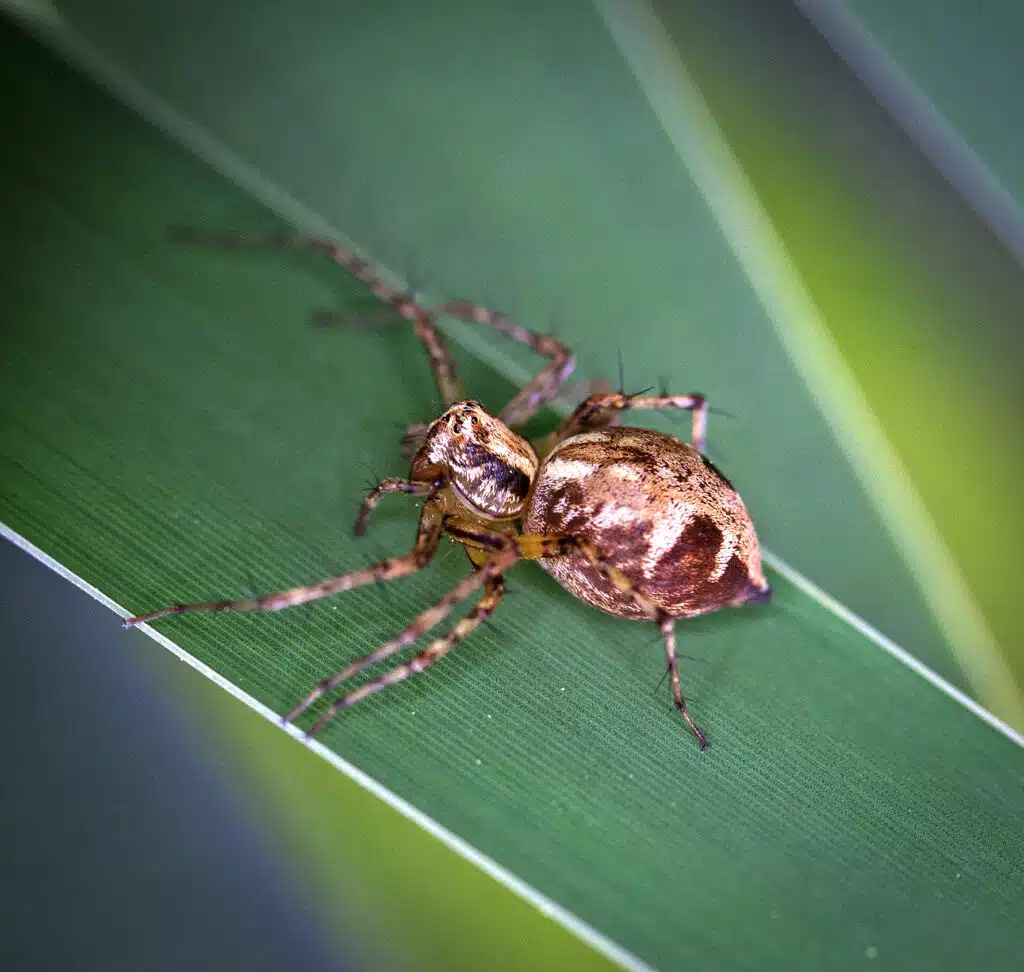
The Western Lynx Spider (Oxyopes scalaris) belongs to the Oxyopidae family and is a small, spiny-legged spider. It feeds on a variety of insects, including pest insects. This spider is a beneficial spider that can be seen in yards, agricultural fields, and gardens in Utah.
They have catlike hunting behavior, ambushing and slowly stalking prey. They then pounce on the prey. They do not rely on webs to capture prey, the web is used to protect eggs.
This spider has an interesting behavior of waving its front legs and jumping quickly through vegetation. They vary in size, growing up to 16mm in body length with long fangs. They have long abdomens, tapering at the back, and spines on the legs.
They have six eyes of similar size in a hexagon on the top of the head, with a pair of smaller eyes just below the hexagon on the front of the face. Two thin black lines extend from the middle pair of eyes to the tip of the mouth and a thin line under the legs.
The female has a pale yellow head with white and dark bands on the top of the body. Males are similar to females, with a copper-colored iridescent head, club-shaped black pedipalps, and iridescent scales on the abdomen, which can be purple or silver-green.
12. Banded Garden Spider
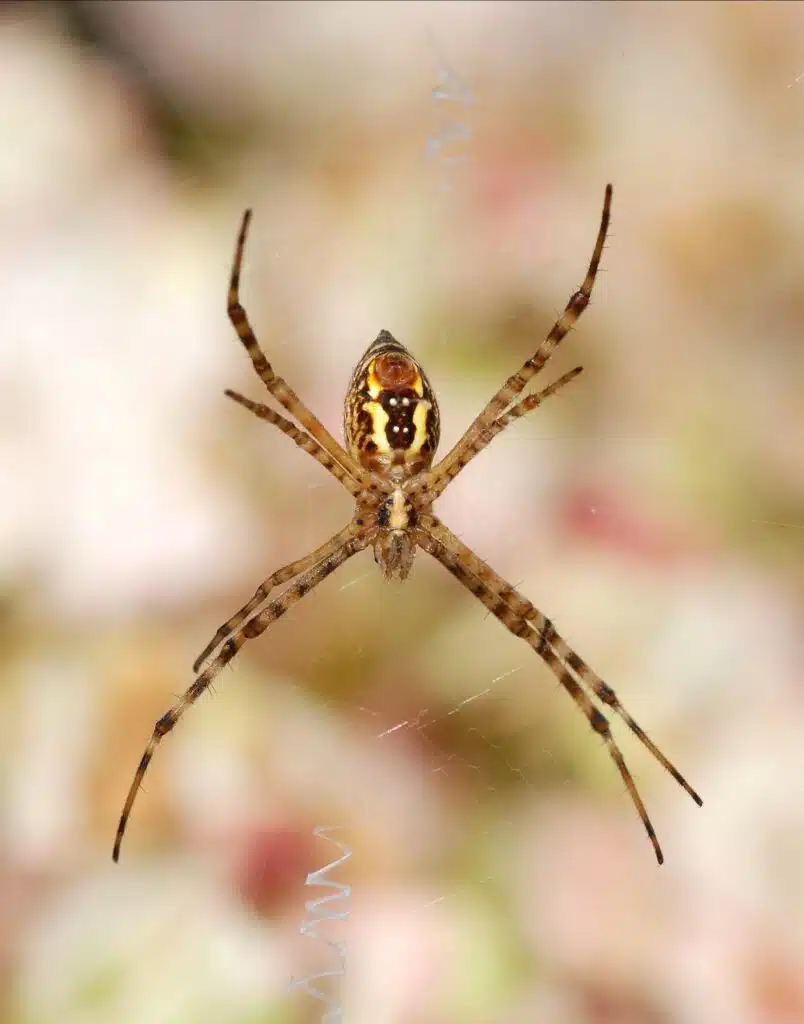
The Banded Garden Spider (Argiope trifasciata) is an orbweaver that builds webs between plants in garden beds. The spider sits upside down in the center of the web, waiting for prey to get tangled. The dark belly is facing south, which helps absorb heat.
This spider varies in color with some being red-brown with white bands and others being black with yellow and white bands. As they get older they darken in color. The legs are banded in colors that are similar to the abdomen and head.
The abdomen is bulb-shaped and they have a furry neck region, which is made up of silver hairs. This spider is mostly active from mid-summer. Males spend their time at the edge of the females’ web, just before mating.
While considered harmless to humans, the female can inflict a painful bite when guarding her eggs or she feels threatened.
13. Northern Yellow Sac Spider
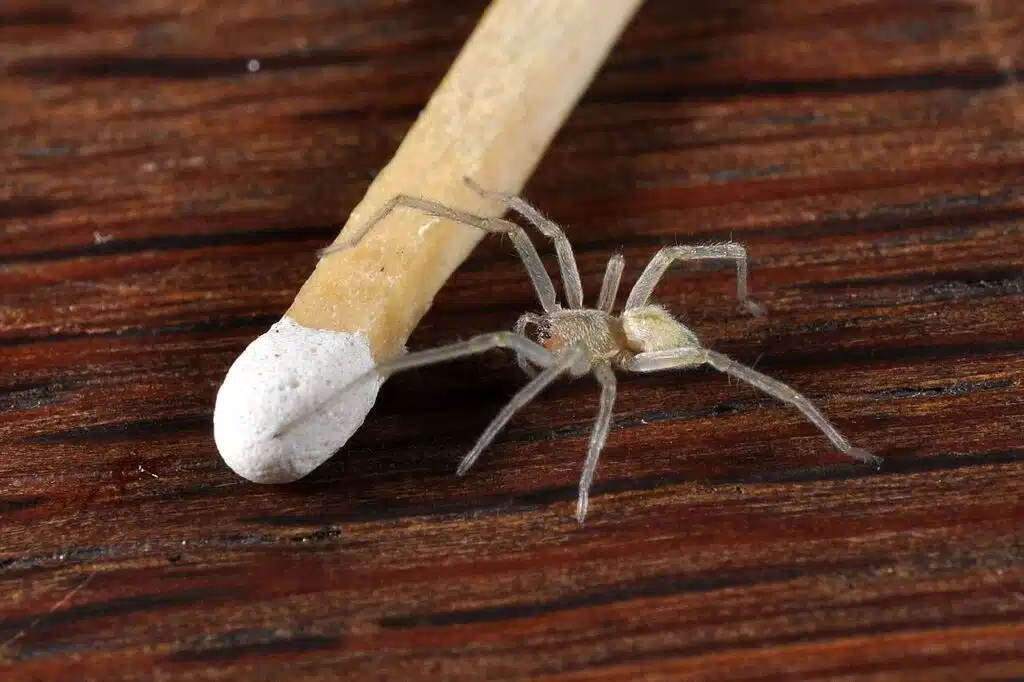
The Northern Yellow Sac Spider (Cheiracanthium mildei) is green or tan with dark brown chelicerae and palpi. This spider can grow to 10mm in body length. The legs have a double claw at the end with the front legs being double the size.
They have excellent vision, which they use for hunting prey. They are known to bite humans if they are disturbed or feel threatened, but their bites are not medically significant and are generally mild.
This spider was introduced to the United States and is now common in Utah. They can be found inside and outside the home.
14. Barn Funnel Weaver
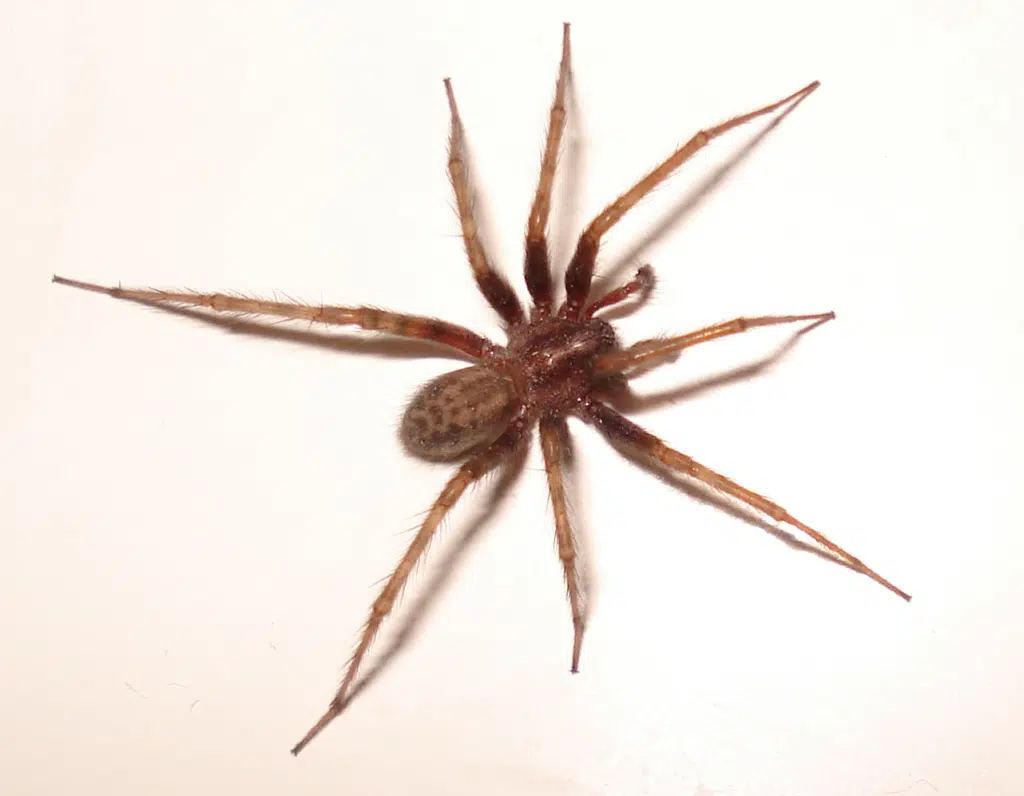
This spider (Tegenaria domestica) is variable in color and ranges from red-brown or dark brown and pale yellow. The abdomen has a chevron pattern and the cephalothorax has two dark lines on either side.
They have long legs which have black and brown banding, which helps with identification. This is a small spider that can be found inside and outside the home. They hide in dark corners and usually flee once sighted.
It is not an aggressive spider. They build a conical web, which is used to trap insect prey. It is also an agile hunter and can use its speed and excellent vision, along with its web to capture prey.
Their movements are precise. They move in short intervals, stopping a few times to decide where to go. The spider is usually seen sitting at the back of the funnel-like web, waiting for prey to disturb the web. Vibrations are sent to the spider once the prey is tangled, which enables the spider to attack the victim and drag it back into the funnel for consumption.
15. Long-bodied Cellar Spider
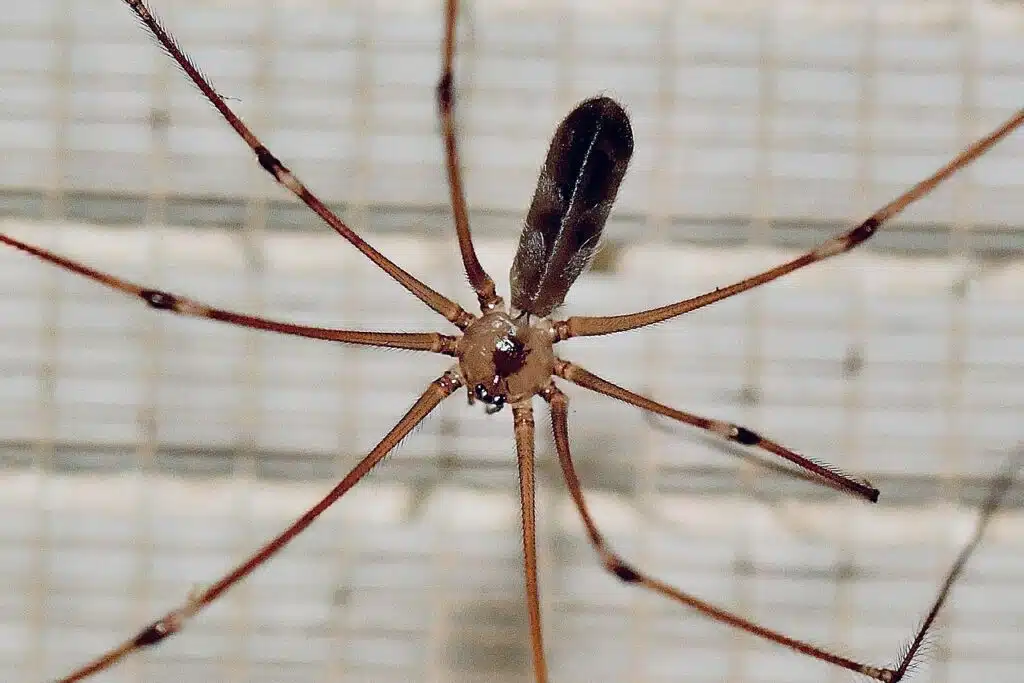
The Long-bodied Cellar Spider (Pholcus phalangioides) is often referred to as a Daddy-Long-Legs. It has a rounded bottom with a tapered waist. The legs are long and spindly.
This spider will bounce on its web, blurring it to the observer and making it harder to see. This behavior helps to disorientate predators or threats. When they are not bouncing in their web, they are hanging upside down waiting for insects to get tangled in the webbing.
They have very small mouthparts, which make it impossible to bite humans. They are very venomous, but thanks to their short fangs, they cannot inject any venom into humans.
16. Utah Crab Spider
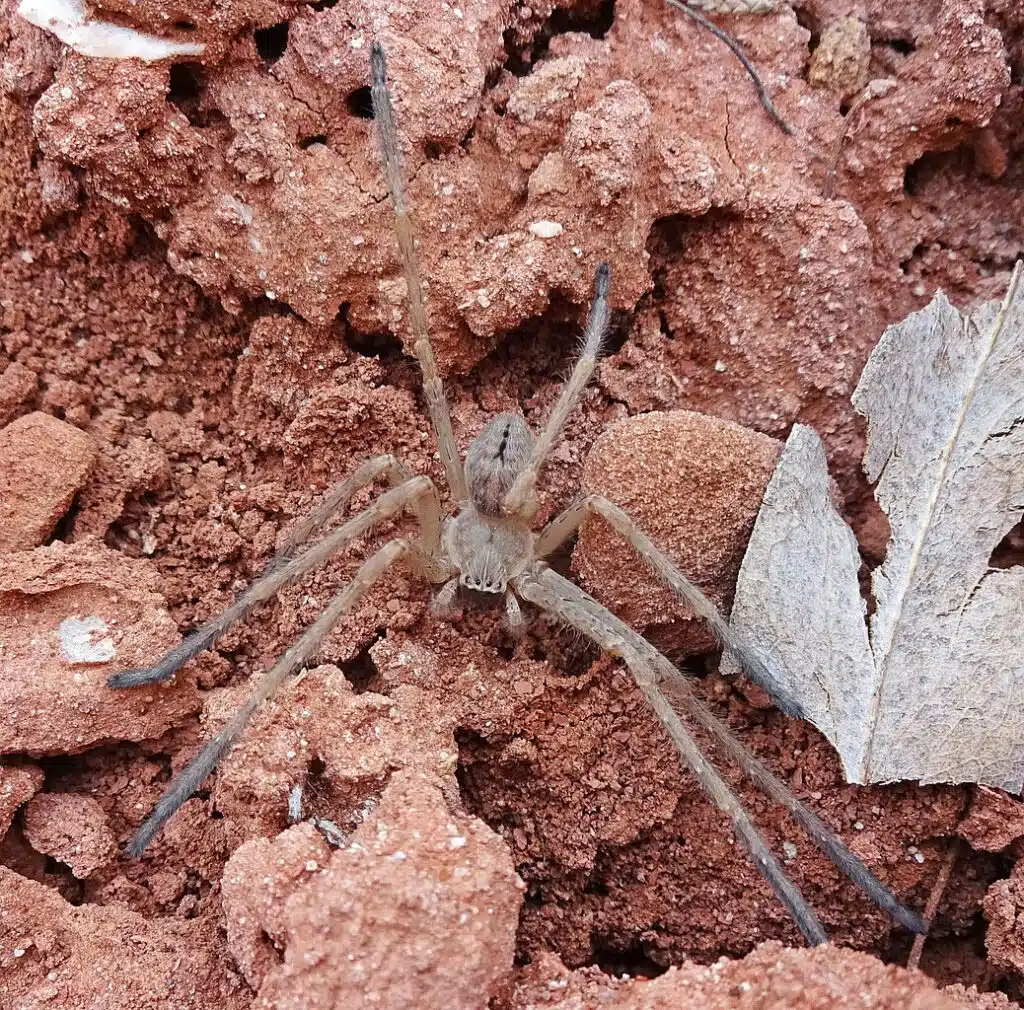
Utah Crab Spiders (Bassaniana utahensis) are often found in parks, wooded areas, and anywhere with plenty of trees. They have larger and longer front legs, when compared to the rest of the legs. Their body is flattened and round.
This is a dark spider with a mottled pattern. They have excellent eyesight with two large eyes and six smaller eyes. They can move sideways, backward, and forwards. The female is larger than the male and can grow to 1cm in body length.
Unlike the majority of crab spiders, the Utah crab spider is small in size and is not known to inflict painful bites on humans. They will bite if provoked, but cannot break the skin.
17. Goldenrod Crab Spider
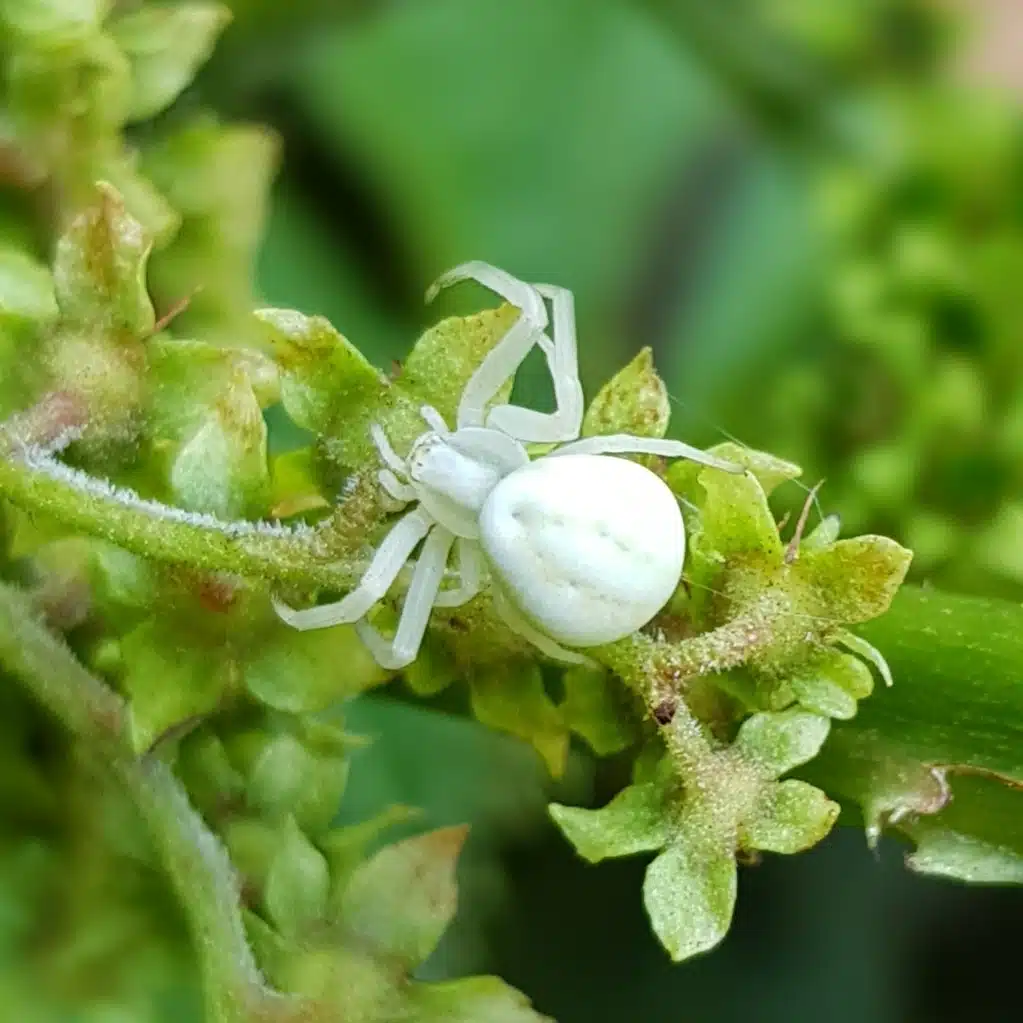
The Goldenrod Crab Spider (Misumena vatia) has a wide, flat body that looks crab-like in appearance. It has the unique ability to walk forwards., backward, and sideways. It has eight legs, the first two pairs are larger and longer. They tend to hold their longer legs open, using them to capture prey.
This spider is harmless to humans. Their fangs are not powerful enough to penetrate human skin and they have very weak venom.
The goldenrod crab spider can be white or yellow. The color is determined by the flower they are hunting on, which acts as an active camouflage. Younger females tend to hunt on a variety of flowers with the tendency to adapt their color to the surrounding flowers.
The color-changing process can take up to twenty-five days to complete. They are usually found on bright yellow flowers and goldenrods, which attract a variety of insects. The female is yellow-white with dark sides. There is sometimes brown or red on the abdomen, which is not affected by the background color change.
Males are darker than females with brown or red outer shells. Males have a white spot in the middle, which continues around the eyes. Males also have two sets of red and white bands.
18. Giant Crab Spider
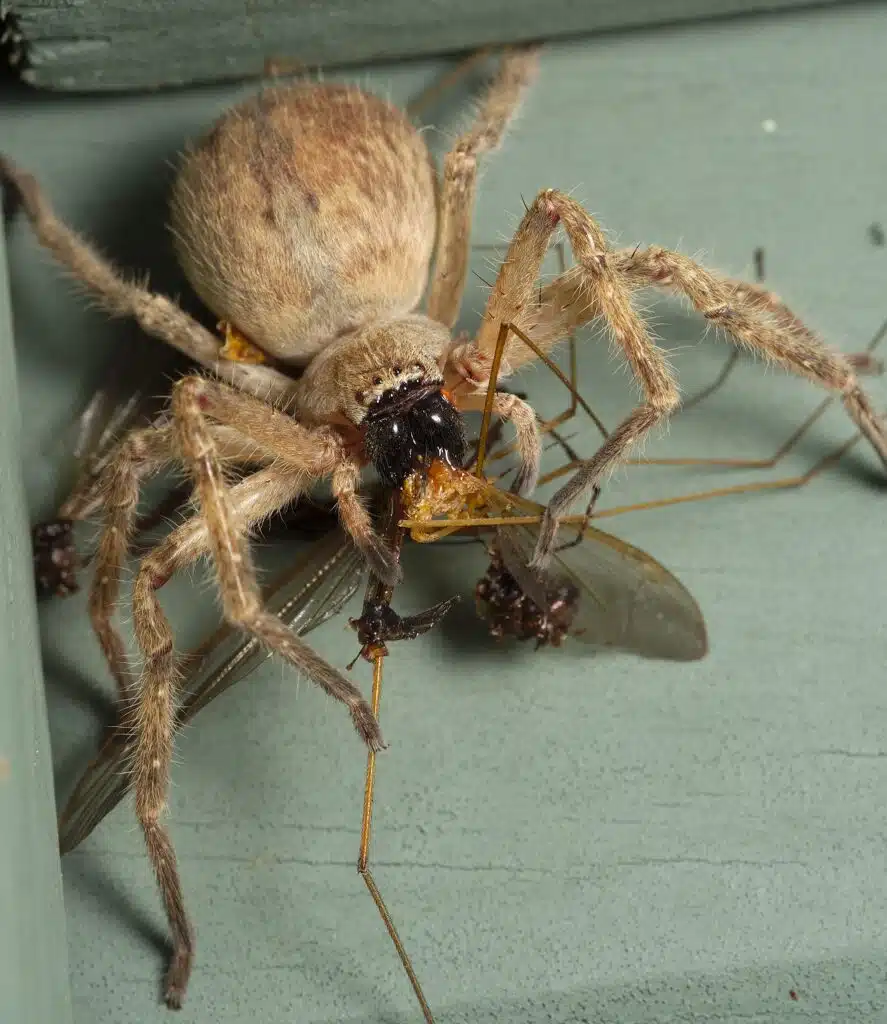
The Giant Crab Spider (Olios giganteus) is also known as the golden huntsman spider and is one of the largest spiders in Utah. The body of the spider can fit into the palm of a human hand, excluding the legs.
This spider has sandy-brown legs and cephalothorax, which is covered in short hairs. The tips of the legs are darker in color. They have a round abdomen, which is smaller than the cephalothorax. There is a narrow dark stripe down the middle of the abdomen.
This is an ambush predator that lies in wait for prey smaller than itself. They are large and very fast. Their ability to jump, and move in any direction and speed helps them capture prey with ease while making them very difficult to catch.
You can find this spider in shrubs, on boulders, walls, and tree trunks. They do sometimes wander inside homes, though they do prefer the outdoors. They are more common in the summer with females being larger than males.
19. Apache Jumping Spider
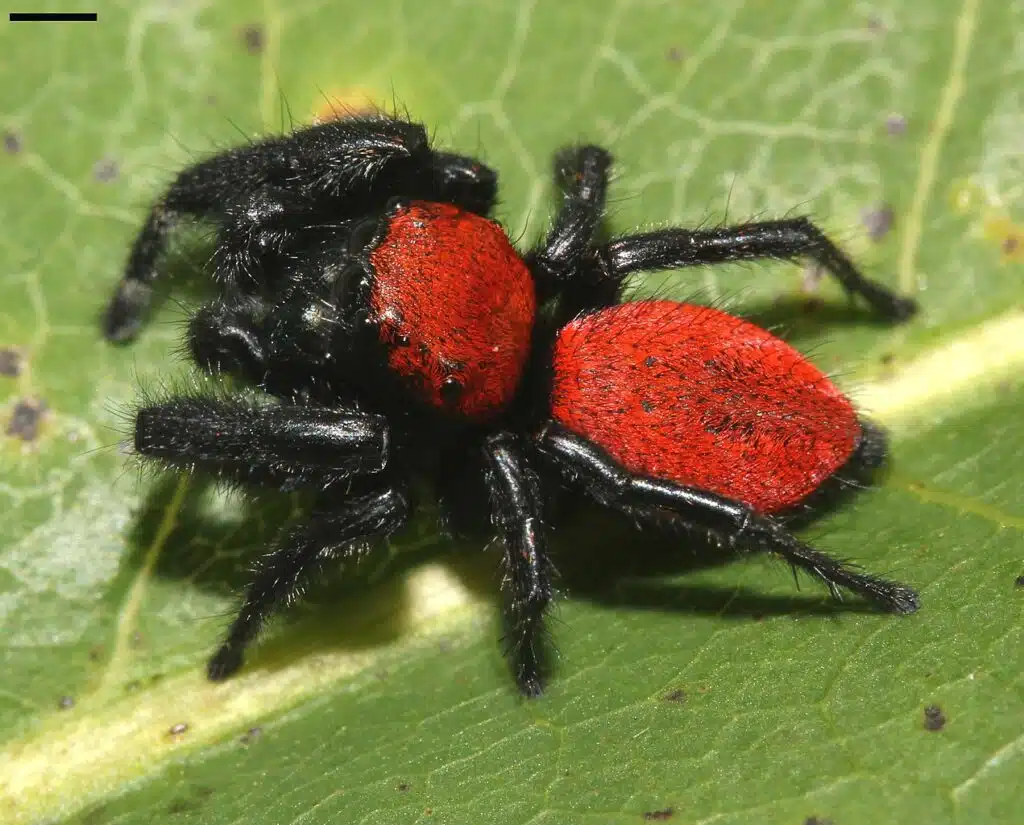
This (Phidippus apacheanus) is a large jumping spider that can grow to 22mm in females and 3.3mm in males. They have green mouthparts. The female is black and has orange on the top of the body and a black stripe on the abdomen, the underside is black.
Often there are light spots or a light band on the abdomen of the female. The male is similar but is solid in color. The ale is red-orange with dark mouthparts.
This spider prefers fields, deserts, and dry grasslands. They are often encountered on cacti, shrubs, and plants in hot and dry areas.
20. Carolina Wolf Spider
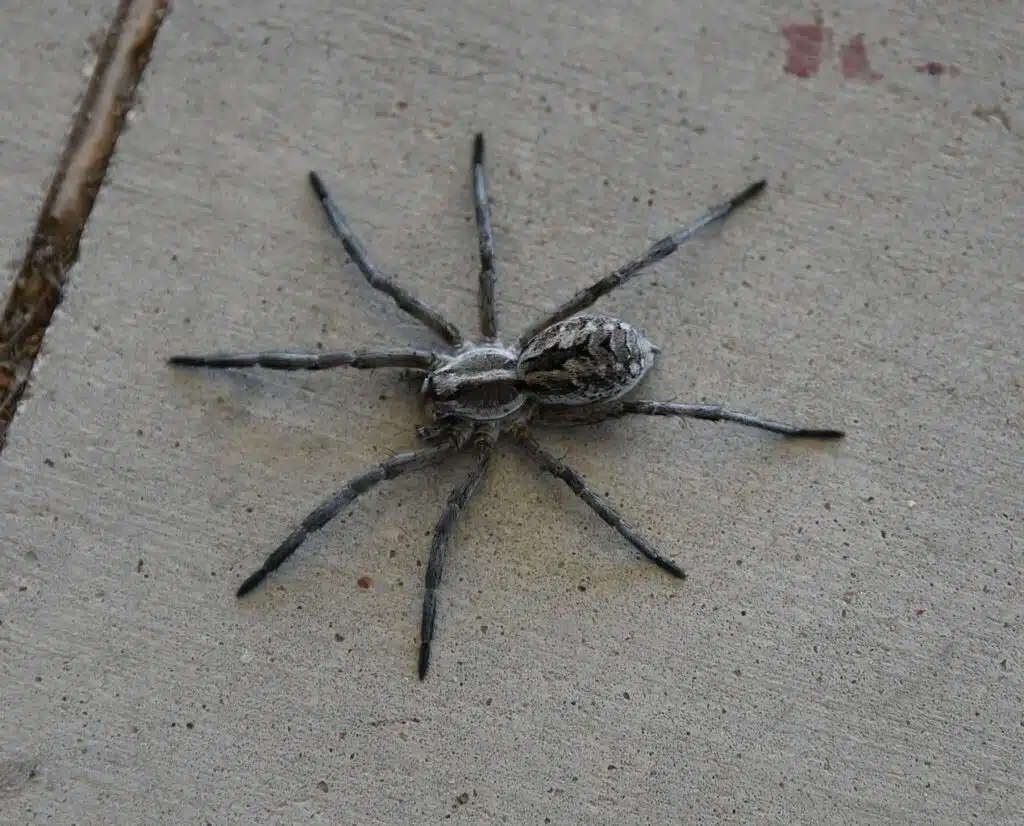
The Carolina Wolf Spider (Hogna carolinensis) is the largest wolf spider in Utah and can grow to 35mm in females and 20mm in males. It is mottled brown with dark on the underside. The male has an orange on the sides.
They live in self-made burrows or abandoned burrows. They do not rely on a web to capture prey but are excellent ambush predators. They are known for the females that carry the egg sac on their bodies during the incubation period.
It has a very unique type of venom. The venom is effective at paralyzing prey and preventing microbes from the prey infecting them. This is a light brown spider with dark brown on its back. Some males have an orange on the side of their abdomens.
This spider prefers flat and open areas and is common in desert areas.
21. Gem-shaped Orbweaver
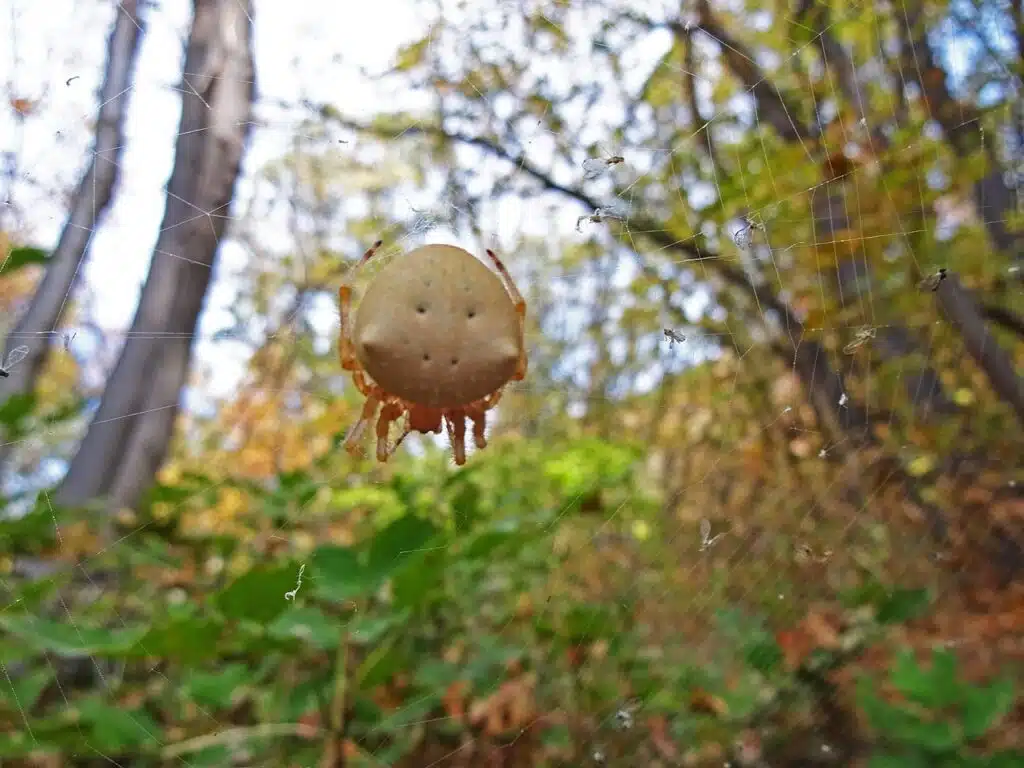
The Gem-shaped Orbweaver (Araneus gemma) is also known as the Jewel Spider or the cat-faced spider. It is a common outdoor spider with low-toxicity venom. It is a beneficial spider and a natural predator of insects.
This spider makes a web near lights, in closed spaces, and on the side of buildings. You may encounter it under overhangs, in wood, and animal burrows. They range in color but can be identified by the two horn-shaped growths on the abdomen.
The female will die within days of laying an egg sac, which has hundreds of eggs inside. Once hatched, the spiderlings ride on silk strands, enabling them to be transported for miles.
The female has a large abdomen, larger than her head. Males are smaller with longer bodies. They eat a variety of foods, including house flies, mosquitoes, and fish flies.